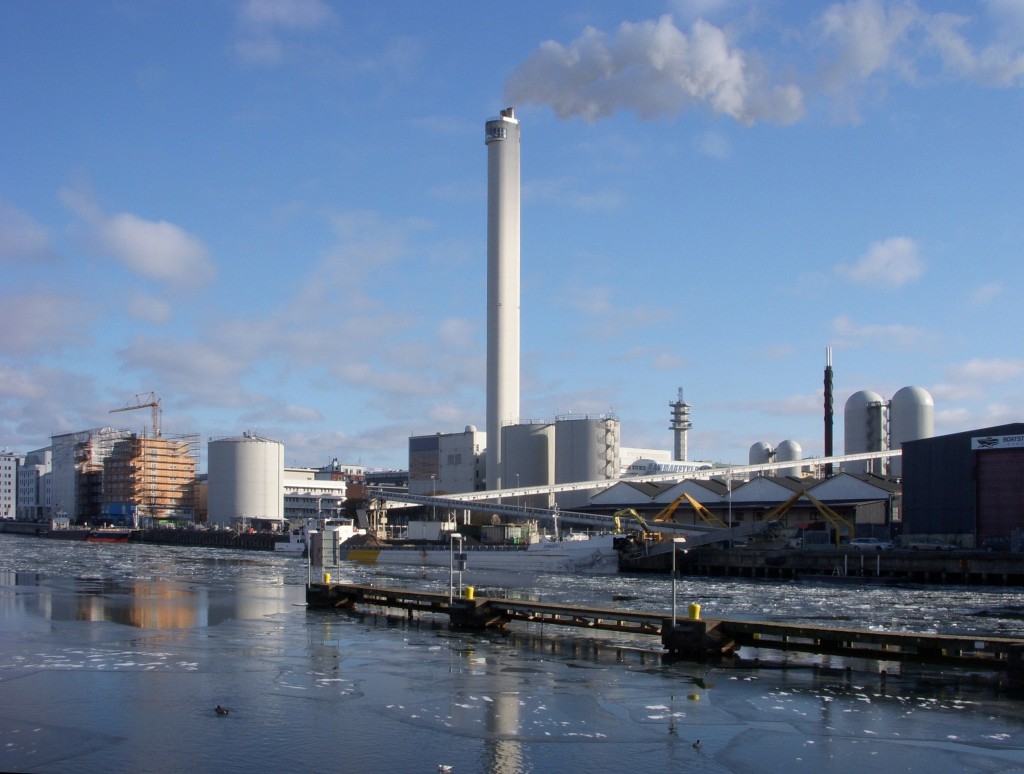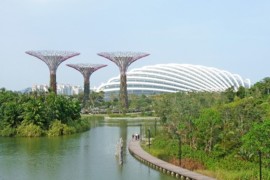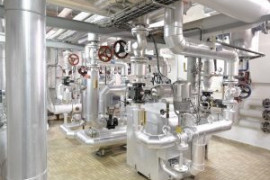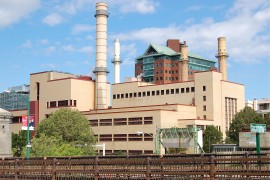
Cooling network of Hammarbyverket
Cooling networks are installed in order to ensure user comfort in summer, and are dedicated to the transportation and distribution of “negative calories” – by opposition to the calories of heat networks, you know: we have by example recently talked about geothermal or biomass. cooling networks on explanation DHC News.
How does a cooling network work?
A cooling network works like a heating network … in reverse. Indeed, whereas the heating network brings heat from a boiler to a set of buildings, a cooling network’s role is to evacuate the ambient heat and transport it to a discharge point into the air or in water.
Thus, a cooling network comprises a closed circuit, always with a minimum of at least two pipelines (one for evacuating, the other for the return). It consists of:
– One or more heat removal units, refrigeration plants or production facilities of ice water;
– A piping system that transports the heat with a coolant, water in most cases (temperature between 1 and 12 ° C to and between 10 ° C and 20 ° C return);
– Substations to collect heat in the buildings that are to be cooled.
Note that if cooling networks require much electricity to operate, they consume, per household connected, about two times less than air conditioning. They therefore represent a more ecological and economical solution, both for the planet and users
A “technology showcase” in Paris,
Today, France for example has fifteen cooling networks, which cover over 100 km of offices and housing. The cooling network in Paris is a real technological showcase, since it provides air conditioning for nearly 5 million square metres. In existance since 1991 and managed by Climespace, it has 8 production plants with a capacity of 400 MW. 500 clients are thus “cooled” for a delivered energy of 412 GWh / year.
Other networks of this type exist, notably Bordeaux, Grenoble, Lyon, Monaco, Montpellier, Paris La Defense, the Villepinte Exhibition Park and the Stade de France.
Examples of cooling networks
Worldwide, there are also more than 1500 cold networks. Examples in Europe:
– The cooling network in Stockholm (Sweden), managed by Fortum. It is part of the largest on the continent. With a wingspan of 371 km and a capacity of 888 GWh, it allows cooling a surface of 7,000,000 m2 of shops!
– The cooling network of the Federal Polytechnic School of Lausanne (Switzerland). This is interesting because of the technique used. It is indeed deep, cold layers of Lake Geneva, by pumping 70 meters deep (therein water at 6 ° C). Water “back” is then returned to the River Sorge, at 12-14 ° C.
– The cooling system of the Helsinki District (Finland) is also interesting. It values the heat lost in the summer in units of energy cogeneration. For this, it operates in absorption refrigerators, air-condition which hundreds of businesses, industries and living areas connected. And depress in passing electricity consumption!
To avoid missing out on any future explanations of cooling or heating networks networks, subscribe to our newsletter.







